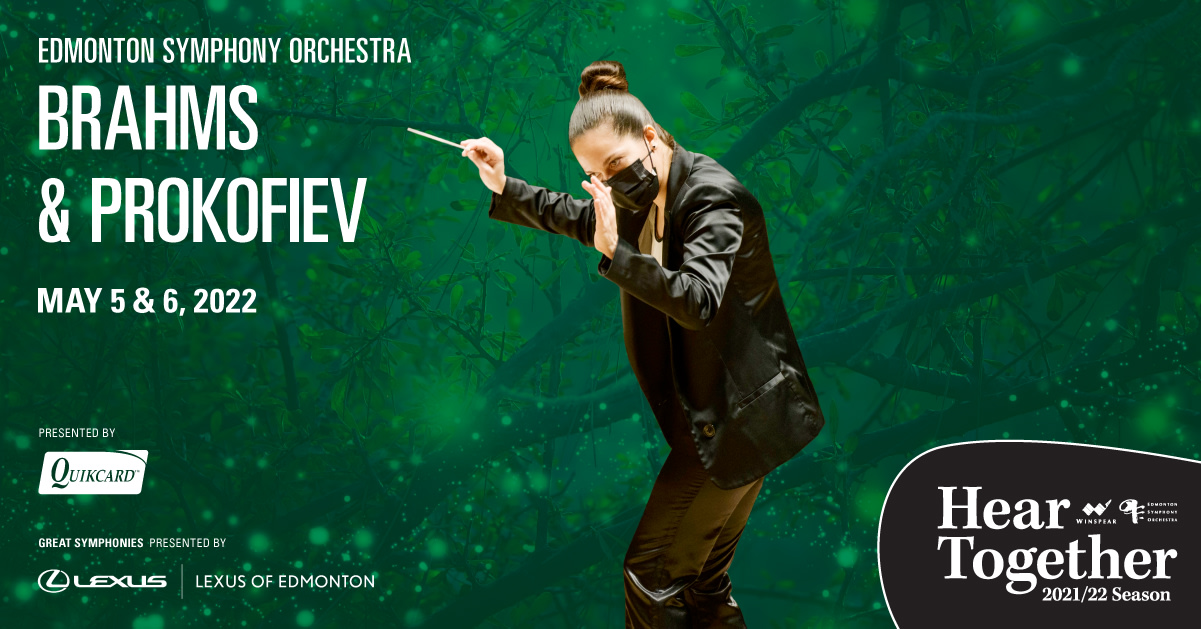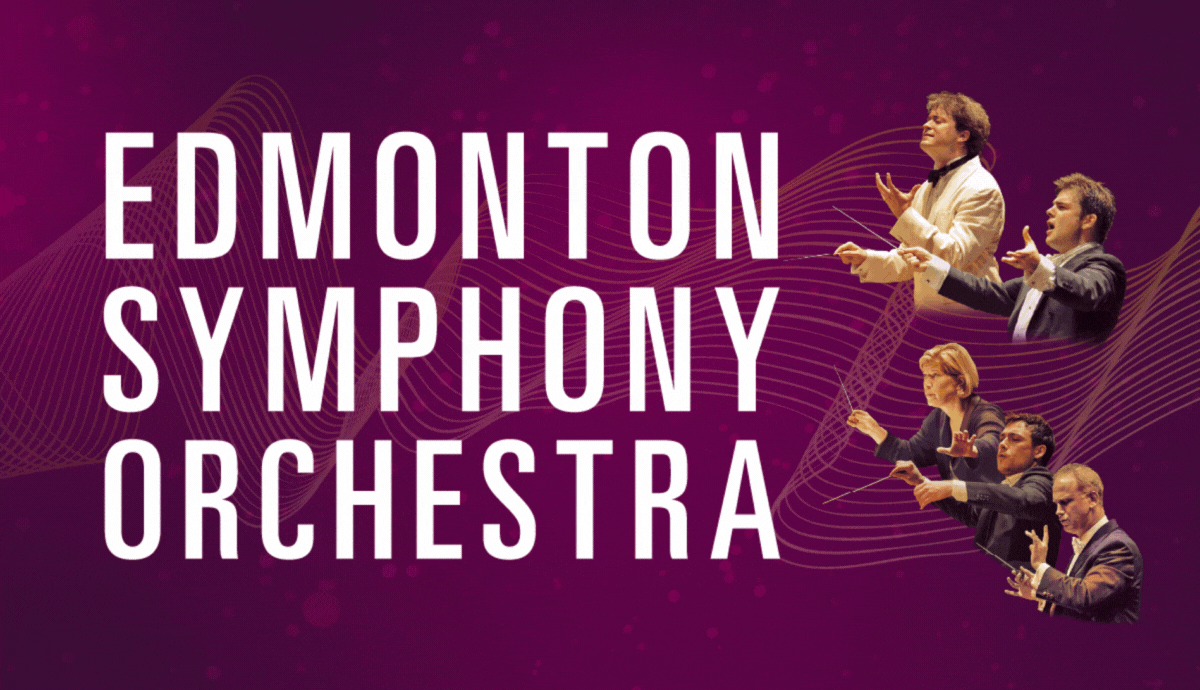The Symphonic Stories of Brahms & Prokofiev
April 8, 2022

By Kyra Droog
How is it that music transcends language and exists as something that two people from across the world could understand in a similar way? Music makes us feel; it brings us together as we experience stories told through the beautiful connection of instrumentation and emotion. On May 5 and 6, your Edmonton Symphony Orchestra is presenting Brahms & Prokofiev, sharing two incredibly impactful and emotive orchestral works that are certain to tug at your heartstrings in all the right ways.
In many cases, composers create their masterpieces with a specific moment, emotion, or story in mind. In other cases, music draws from experiences that composers want to share with their audiences. The best way to understand the two pieces presented in Brahms & Prokofiev, then, is to see a slice of the composers’ lives at the time in which they completed their works. As we attempt to understand what they were seeing and feeling as they composed, we open ourselves to the opportunity to hear their experiences within the music.
Brahms & Prokofiev begins with Sergey Prokofiev’s rousing and energetic Piano Concerto No. 3 in C Major, Op. 26. Interestingly, this concerto didn’t come together all at once; in fact, Prokofiev began to piece different themes together in 1913, yet this concerto wasn’t performed for the first time until 1921. 1917 was a musically successful year for Prokofiev, as he completed multiple pieces, including substantial work on Piano Concerto No. 3. Why was this year so inspirational for him? Well, Prokofiev was overjoyed to hear that Tzar Nicholas II had been overthrown, and he felt energized by the thought of social and national renewal in his homeland, a place he had left before the First World War. We can hear his hope, humour, inventiveness, and wit throughout the piece, as he shares his many feelings through a variety of musical choices – some more subtle, and some very clear to any listener.
The next piece in the Brahms & Prokofiev program is in almost direct contrast to the energy Prokofiev shares in Piano Concerto No. 3. In his final symphony, Symphony No. 4 in E minor, Op. 98, Johannes Brahms sets an undeniably tragic scene. Though the actual story behind Brahms’ inspiration for his Symphony No. 4 remains shrouded in mystery, the theory is that between his isolated composing studio in the Alps and the new translation of Sophocles he was reading at the time, he began to feel the walls of time closing in. Though this occurred well after his final symphony was performed for the first time, his final public outing before his death was to see his Symphony No. 4 conducted by Hans Richter. It is clear that Brahms associated this final symphony with questions of mortality and the void; at just over 50 years of age, he also sent along final instructions for the score to his publisher in case he didn’t live long enough to see it performed. His melancholy and sobriety are certainly tangible in the air throughout this beautiful, extraordinary symphony.
Your Edmonton Symphony Orchestra will be conducted by Resident Conductor Cosette Justo Valdés, and joined by guest pianist Stewart Goodyear, as they bring Brahms & Prokofiev to life.
 Tickets start at $25
Tickets start at $25Find Tickets


